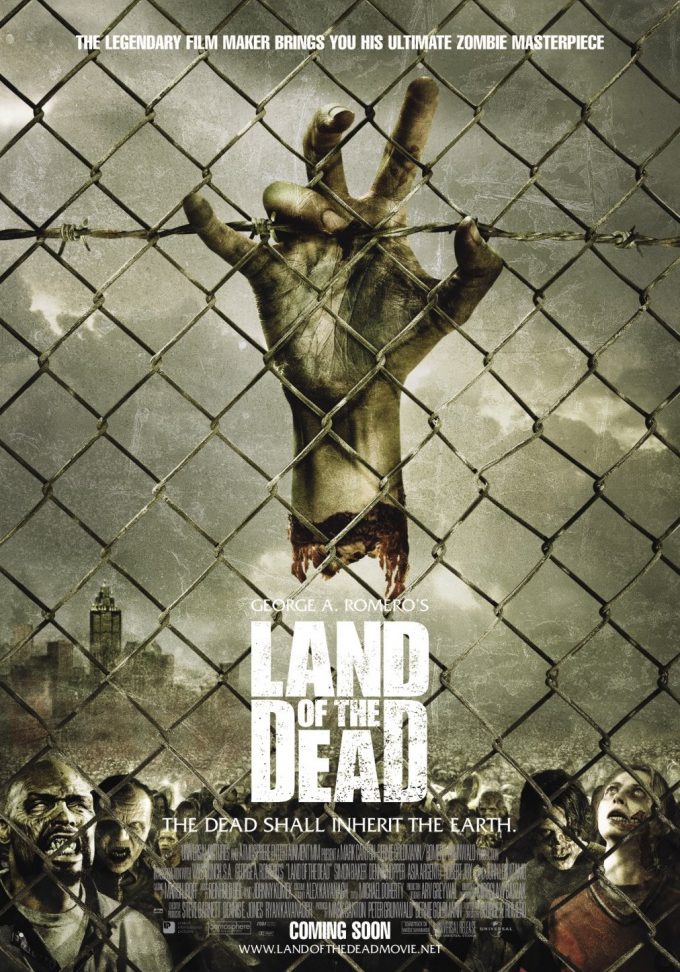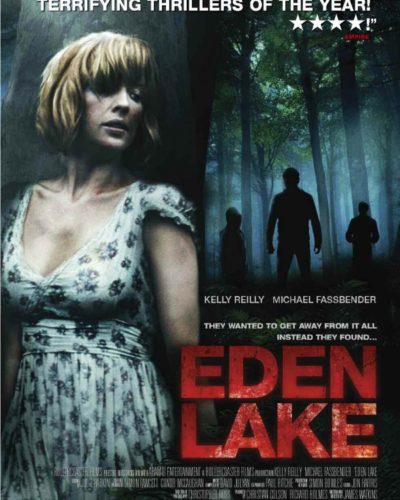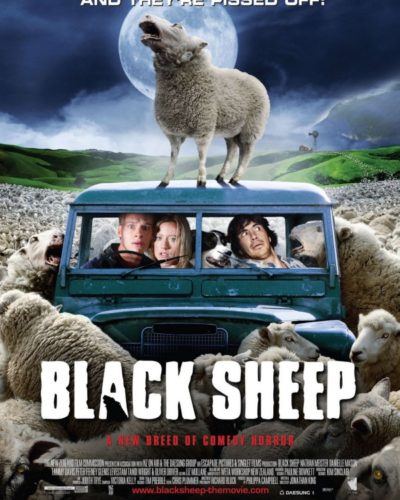In the Land of the Undead: A City Divided
In a world where the living cower behind walls and the dead roam vast landscapes, Land of the Dead emerges from the shadows. Directed by the legendary George A. Romero, the 2005 installment of his Living Dead series offers a post-apocalyptic Pittsburgh where societal hierarchy has taken an eerie form. As the rich barricade themselves in a fortified skyscraper called Fiddler’s Green, the less fortunate scavenge the wasteland outside – both sets of humans threatened by the ever-present menace of the evolving undead. This gruesome tableau sets a chilling stage for viewers who are prepared to confront what lurks beyond life as we know it.
An Atmosphere Rife with Decay and Disparity
The film deftly crafts an atmosphere inundated with despair and decay. Romero expertly uses a cocktail of suspense and bleak visuals to paint a world where death is not the end, but another terrifying beginning. The director’s touch is palpable in the deliberate pacing, steadily building tension as the living dead grow more sentient and the true nature of humanity is laid bare amidst crisis.
From the very first frame, the cinematography showcases a palette of grays and muted hues reflecting a civilization past its twilight. Sharp contrasts between the opulence of Fiddler’s Green and the surrounding squalor underline not just a visual horror but a societal one. The camera work, with its claustrophobic close-ups and sudden, frantic swerves, drives home the unpredictability and instability of this new world order. Amid this, the special effects – a blend of practicality and CGI – commendably deliver grotesque embodiments of terror without overshadowing the story.
The soundtrack and diegetic sounds of moans, groans, and the ever-present dread of the undead’s footsteps become characters in their own right. Moments of silence are stark, amplifying the fear of the unseen and allowing the audience’s own heartbeat to accompany the tension.
When the Dead Walk, Humanity is Revealed
Performances in a horror film can make or break the tension, providing viewers with an anchor to the humanity often at risk. The ensemble cast of Land of the Dead delivers diverse portrayals of individuals shaped by the end of days. The late, great Dennis Hopper as Kaufman, the cold, calculating mastermind behind Fiddler’s Green, embodies the moral corruption of a leader profiting from disaster. Meanwhile, Simon Baker’s Riley represents the flickering flame of humanity’s survivalist instinct, albeit on the brink of being extinguished.
The film navigates through the maze of horror sub-genres, dabbling in social commentary as it does in gore. Its zombies are not mere flesh-eating plot devices but represent something fundamentally disturbing – the evolution and resilience of nature’s darkest mistake. By challenging the conventions of the mindless zombie trope, Romero elevates the horror to a cerebral confrontation with mortality and the primal fear of the unknown.
The fright tactics in Romero’s work eschew the over-reliance on cheap thrills, leaning instead towards a more profound psychological horror interspersed with visceral shocks. The execution of these techniques is masterful, allowing the audience to ponder the horror onscreen and within themselves.
Underpinning the flesh-ripping terror are pithy social critiques, a trademark Romero ingredient. The film serves up a subtle but scathing commentary on class disparity, consumerism, and the inherent self-destructive nature of mankind, urging viewers to look beyond the blood and see the brains – metaphorically speaking.
A Grave Endeavor: The Appeal and Impact of Romero’s Vision
The effectiveness of Land of the Dead as a horror movie lies in its ability to unsettle, provoke thought, and redefine the boundaries of its genre. It is a terrifying journey, not just for the visceral imagery but for the philosophical quandaries it leaves in its wake. While it certainly boasts scenes that aren’t for the squeamish, the real horror emanates from the realization of what society could become when pushed to its limits.
Fans of Romero’s work and horror aficionados will appreciate the deeper nuances of the film’s narrative and its addition to the zombie canon. Those with a penchant for sociocultural themes wrapped in a horror package may also find this movie particularly intriguing. Casual viewers may be caught off-guard by the film’s depth, but if they brace for impact, they are in for a refreshingly intelligent addition to their horror watchlist.
While standing on its own merits, Land of the Dead arguably complements works such as Dawn of the Dead and the more cerebral aspects of 28 Days Later. These comparisons anchor Romero’s film within a tradition of horror that both terrifies and enlightens, proving that horror can be as intellectually stimulating as it is adrenaline-inducing.
Conclusively, Land of the Dead is a well-crafted horror film that layers its scares with sharp social commentary. Its strengths outweigh its weaknesses, offering a recommendation for those drawn to the genre not just for chills but for its potential to mirror the darkest corners of our reality. With the warning of graphic content firmly in place, the film is sure to resonate with viewers looking for substance behind the screams.




